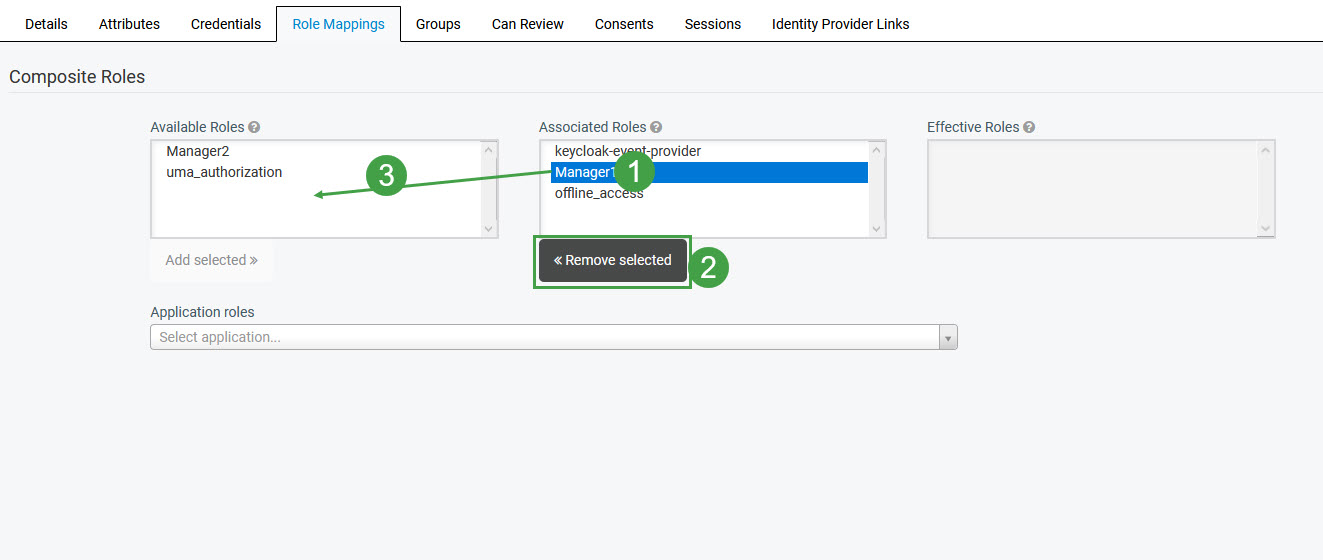Assigning Roles
Manual vs Automatic Assignment
Roles can be assigned to users in two ways:
manually from within the User Management UI on the Role Mappings tab (as it is described on this page) by a user with adequate privileges
automatically during the users' import from UCCE/X, by configuring Role Equivalents in the YAML file.
automatically during the users' import from Webex Contact Center.
Users who have both the manage-users and view-users effective roles assigned from the User Management client application (assigned to the eleveo.admin by default), are able to manually assign roles to other users. However, from the available User Management roles, they can assign only these roles that they themselves already have assigned.
Roles that were assigned automatically and then were removed manually from within the User Management UI will be automatically reassigned during the next synchronization.
Generally speaking, roles assigned to users manually should not be removed or overwritten during the automatic synchronization of users with UCCE/X, unless the same roles would have been assigned to users during the synchronization. In this case, Data Importers will take ownership of the user-role relationship (as if the role were assigned by Data Importer). If the Data Importer takes ownership, this can result in changes in the future - removal or reassignment of roles due to changes pulled from UCCE/X.
Example:
The following scenario illustrates the case described above:
A user John Smith is imported from UCCE to User Management. The user is an agent in UCCE, so the
AGENTrole is automatically assigned to him in User Management as well.A local administrator (using the eleveo.admin account) by mistake removes the role from the user.
The administrator is aware of the mistake and reassigns the role back. So this role is assigned manually.
During the next synchronization, the user is evaluated by Data Importer. The user is an agent in UCCE, so the
AGENTrole should be assigned to him. But the user already has this role (assigned manually). Data Importer takes back ownership of this user-role relationship, and from now on, this role is considered to be assigned automatically.After some time the user is promoted to supervisor in UCCE. During the next synchronization, the user is evaluated by Data Importer: instead of
AGENT, a newSUPERVISORrole is automatically assigned to him.
Role Mappings in UI
NOTE
It is recommended that each user should start with an Eleveo Specific Role as the primary source of permissions. If additional customization is required beyond the Specific Roles, use Application Roles.
Application Roles should not be the primary source of permissions for the initial setup.
Roles in Eleveo User Management are structured. The following role types can be differentiated:
effective roles – privileges that enable particular functionality of the application, are equivalent to 'permissions' (for example, manage-users)
composite roles – sets of effective roles, which can be pre-configured to simplify the configuration of users (for example, ccmanager). They are defined separately for each client application.
To assign roles to a user, go to the Users screen and click Edit to the right of the username. Then open the Role Mappings tab.
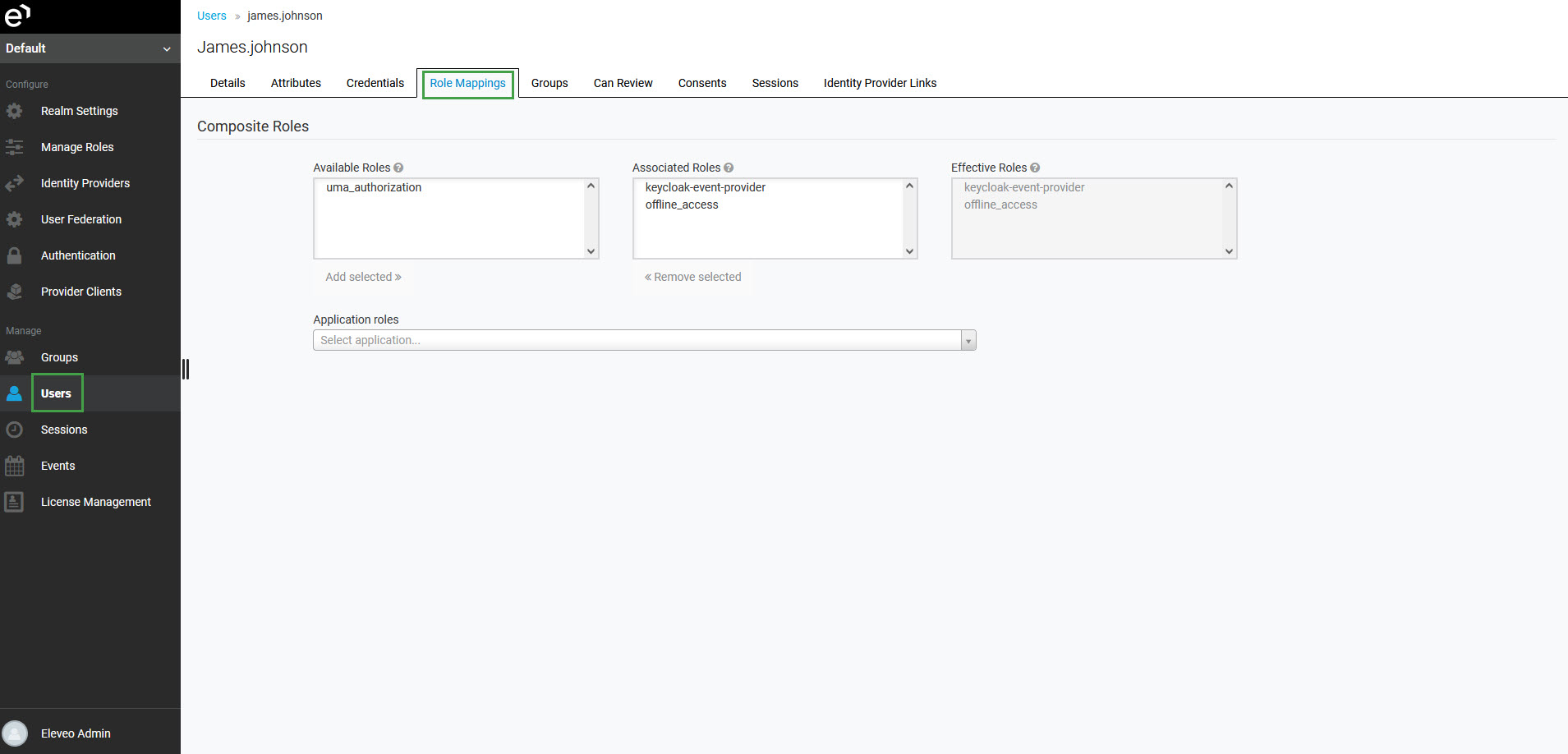
Alternatively, to assign roles to a group, go to the Groups screen and click Edit to the right of the name of the group. Then open the Role Mappings tab.
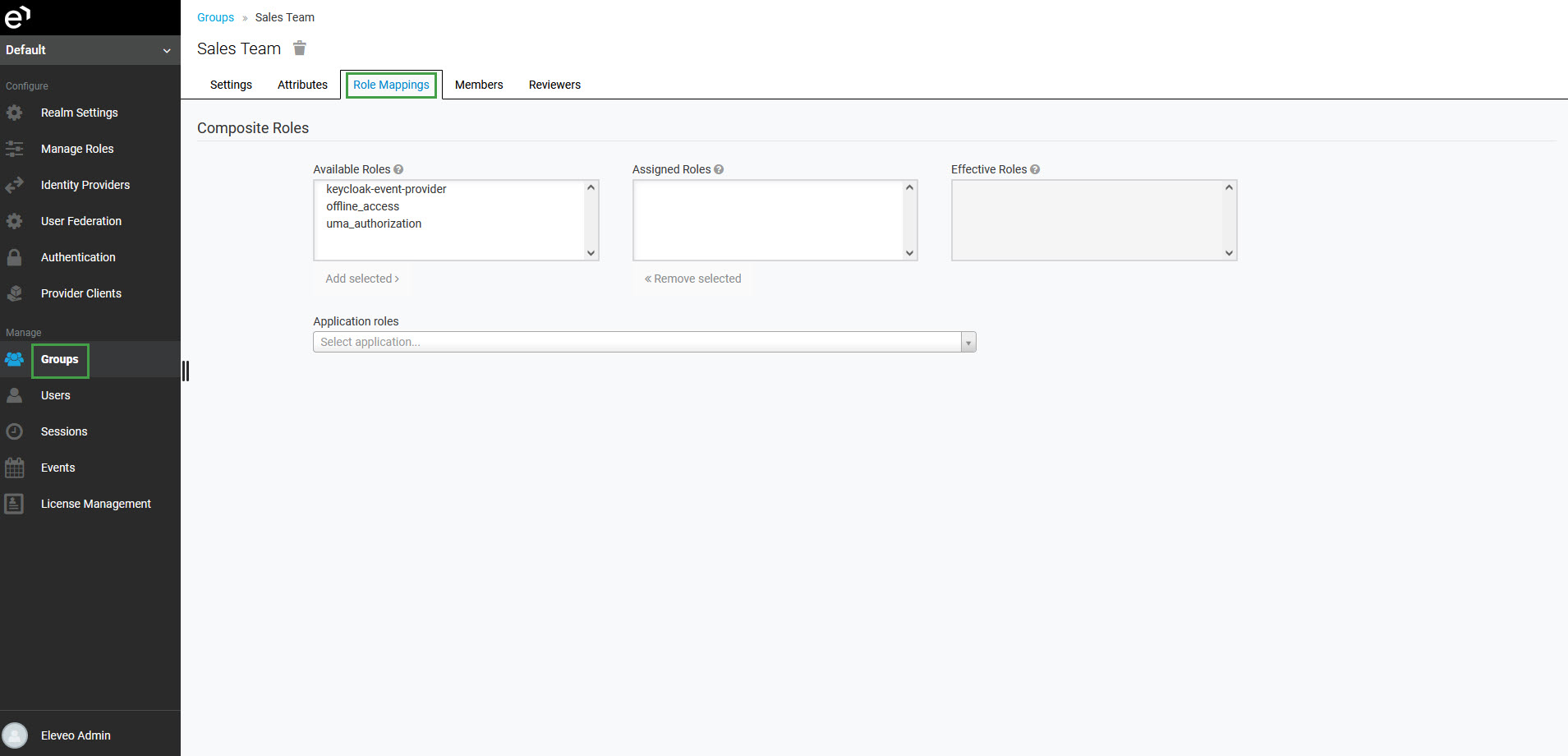
The tab allows for the assignment of composite roles to a user/group after selecting an application.
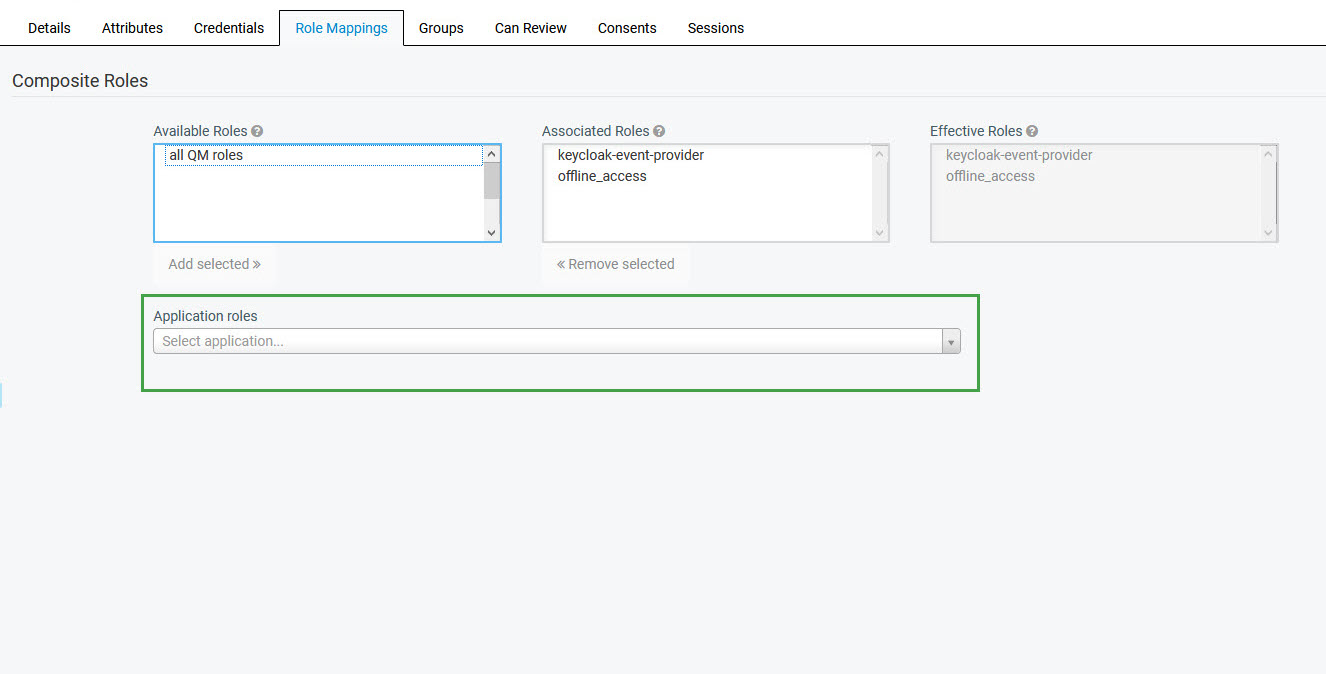
If any custom roles were created, they are visible in the Available Roles section in the upper part of the screen and can be assigned as well.

By default, new users/groups have no roles assigned.
A user can have one or more composite user roles assigned. Also, a user can have effective roles assigned separately.
Assigning Application Roles
To assign a role, type the name of the application in the Application roles search field and select it from the drop-down menu.
Select one of the following applications:
User Management– to assign the User Management rolesQM shared roles– to assign default Quality Management rolesQMorSurveysorConversation ExplorerorSpeechRECoreLearning orLiveMONorWFO Analytics– to assign license-specific Quality Management rolesWFM– to assign the Workforce Management rolesETL Management- to assign the ETL Management roles

The list of roles will display in the Available Roles field. Click on the role to select it and then click Add selected.
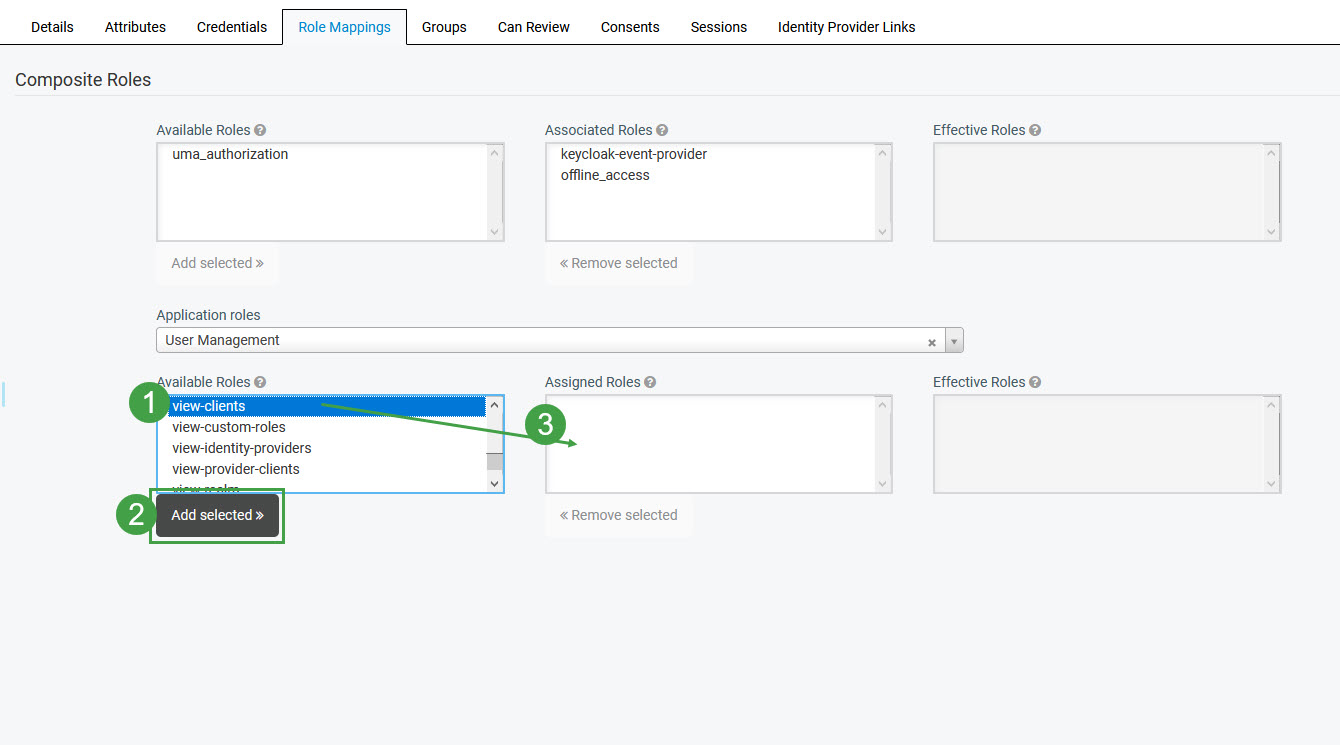
The role will appear in the Assigned Roles field. The Effective Roles field will contain all effective roles assigned to the user/group as a result of assigning this composite role.
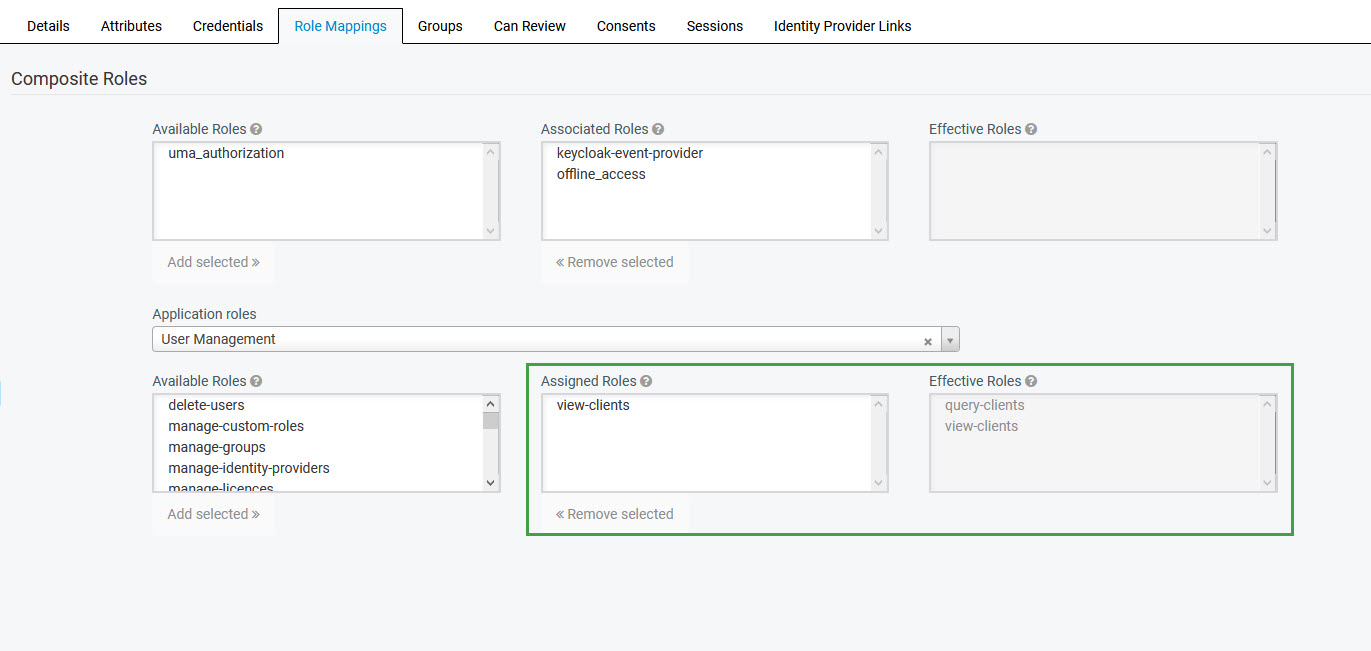
To unassign the role, click on it to select it and then click Remove selected.
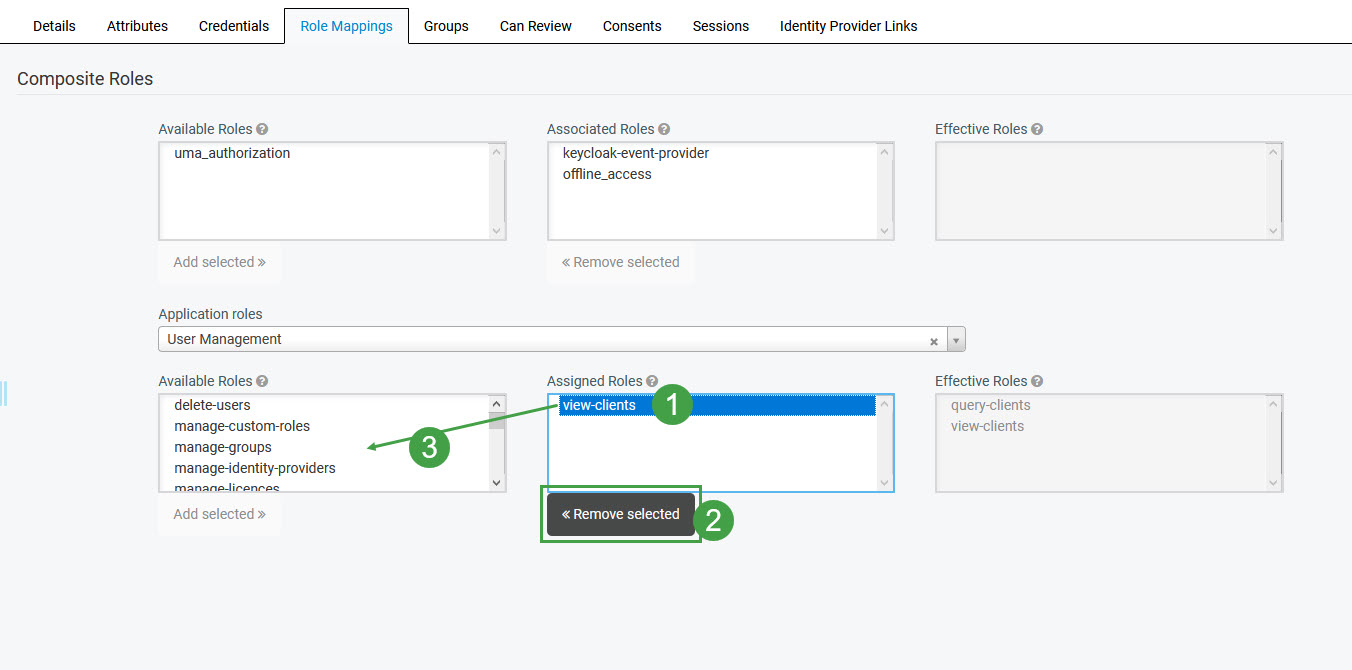
Assigning Custom Roles
Custom roles can be added from the Manage Roles screen. More details can be found on the page Managing Custom Roles.
To assign a custom role, select it from the Available Roles field. Then click Add selected.
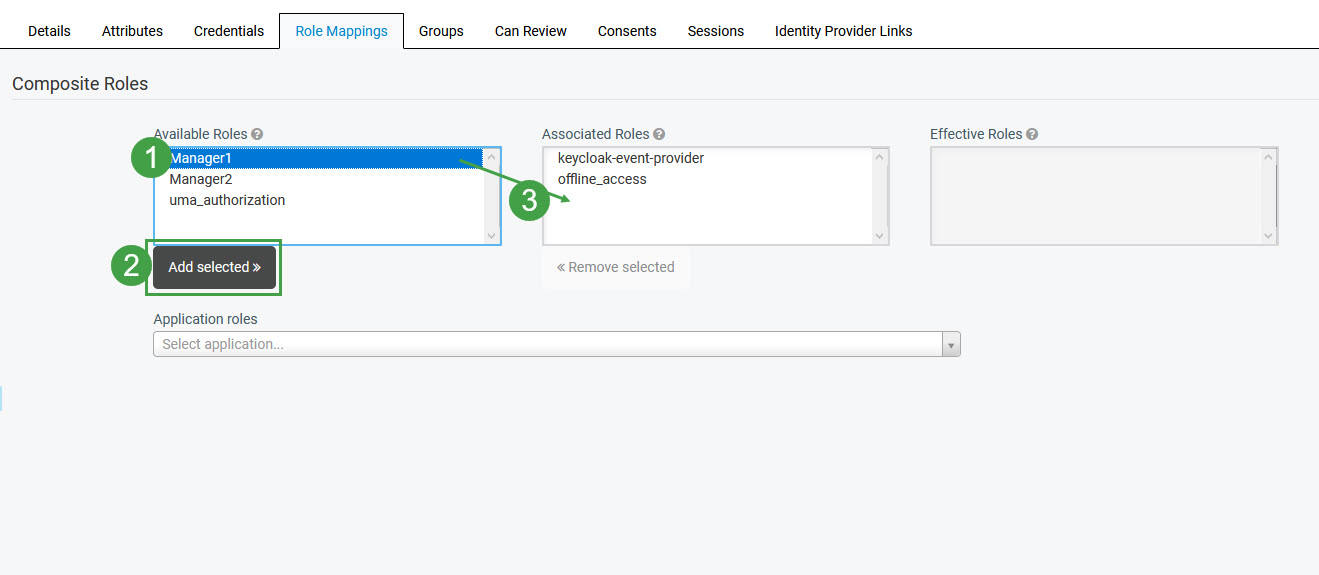
The role will appear in the Assigned Roles field. If the assigned role contains other custom roles, the Effective Roles field will display all roles assigned to the user in the result.
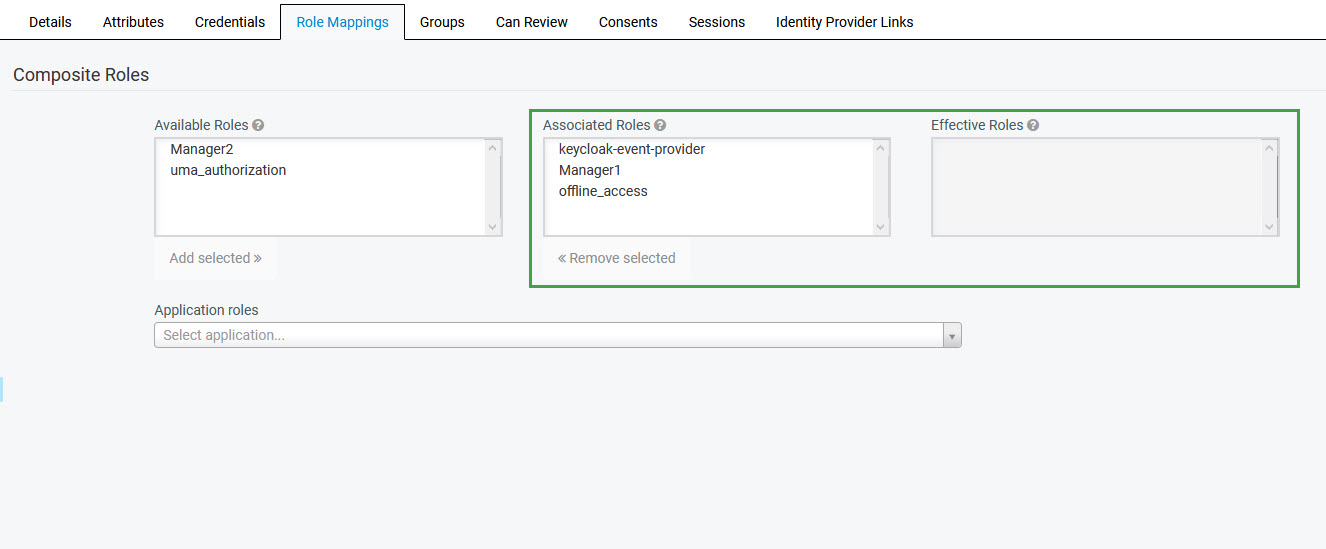
To unassign the role, click on it to select it and then click Remove selected.
